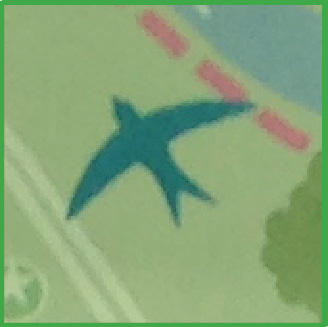 Introduction to ‘Lewes Bonfire Film No. 1: Lest We Forget’
Introduction to ‘Lewes Bonfire Film No. 1: Lest We Forget’
By Adam Whitehall
Bonfire Night, Lewes, November 5th 2014.
A riotous procession for remembrance dating back over 400 years, this long held tradition seems as much an experiment in time-travel as it is a night to commemorate the long dead. My film begins at event’s end, at the railway station as the tourists head home, before turning tail on itself to reverse back along its own short record, reversing the flow of recorded time as only film can. Fireworks implode and return to ground, raging fire retreats into wood, ‘selfies’ are pre-selfed, flaming torches go back on the stock pile trolley, until finally the spine of the parade recedes back along both itself and this filmmaker’s opening experience of proceedings (a priest’s eulogy to World War Two, mournfully soundtracked by a brass band), as if the superimposing multi-historical ghostly re-enactment itself is in fact acting out a return into history, blithely seeking the origin of that which lest we forget.
My filmed dérive of Lewes during Bonfire Night was commissioned in October 2014 for New Pathways: A Psychogeography of Lewes.
As my film work is often psychogeographic by design, I was interested to test out two problematics in the space:
- How might one traverse this event in some way that would be counter to its controlled flow?
- How best, then, to capture and question in an edit the inherent recurring motifs of fire and water, the effect of the event on the town itself, and specifically of its act of remembrance, while staying true to an expression of my embodied movement through the space, avoiding making the traditional tourist record?
The Gunpowder Plot of 1605 is merely one reason behind the continued celebration of ‘The Fifth’ by the collective bonfire societies of Lewes. Indeed, the event acts to give ‘a voice to all those who believe that only by remembering religious upheaval, persecution and war [can we ensure] that such atrocities never happen again’ (Lewes Bonfire Night – A Users Guide 2014). It is a palimpsest of tradition and remembrance superimposing echoes of horrors through historical dress-up and procession dating back to the fire festivals of pagan times, one that takes in the fiery deaths of the seventeen Protestant Martyrs of the 16th century and the lost ‘Bonfire Boys’ to the two World Wars of the 20th century, via Roman Legionnaires, Zulu and Native American pioneers, and pirates. A veritable ghost parade, a ‘cosplay’ of the military dead. Students, kids and parents love it because it is proper noisy, random, fun but serious and kind of disturbing. Outsiders too flock for the seasonal sounds, colours and spectacle, sometimes doubling the population to 50,000.
But scratch a little deeper and one finds a paradoxical event, a deliberately contentious, stubborn and singular affair. Seemingly anarchic but oddly conservative and historically openly anti-Catholic, the event has no central organiser as all the bonfire societies compete separately, yet there is a surprising collectivity. 2014 saw some societies disappointed at being unable to stage firework displays due to poor funds, whilst others prospered. The tourist audience is doggedly unwanted by the locals, yet actively encouraged by those who see an inevitable market. Despite being perceived to be snubbing its nose at health and safety regulations, with its copious barrels of burning coals, hurled firecrackers and burning effigies (which in 2014 was Alex Salmond – because he tried to break up the Union – instead of Nigel Farage, the real comedy villain), it is in fact organised within an inch of its life, like any national public procession, with professional stewards shipped down from up North. Crowds are herded and controlled; timings are exact.
My chosen method for this psychogeography was to shoot video on a DSLR (good for photographing the colours) whilst recording some separate audio field recordings (good for catching any serendipities the camera would miss). A true old school Situationist would have embarked on their improvised drifts of the city under some kind of influence, so it was fortuitous (and heartening) to be treated to fine winter fuel at the home of Margaretta Jolly’s father before I began my walk: hot jacket potatoes and strong cheeses (for their mild hallucinogenic properties) and some good red wine (helps to cushion the system, as Douglas Adams would say, and speed the deep topographer’s sway and dart through the crowds).
Throughout the walk, and as I viewed my footage, I found myself repeatedly conscious of the mantra of the ‘Fifth’: ‘LEST WE FORGET’. With so many historical dates and figures vying for attention, superimposing each other in the maelstrom and cacophony of the procession and the distracting dazzling spectacle of zooming lights and raging fires, where was the time to pause, reflect and take stock? Perhaps in order for my video edit to remember that which I should not forget, it needed to return to the source, to travel backwards in time to the very beginning of my recorded history of this Bonfire Night 5th of November 2014. From leaving back to arriving – a journey through fire in reverse.
![]()
